![Heather Kniffel]() Rolland, Inc., recently featured SIUE Creative Director Heather Kniffel of University Marketing and Communications in its “Conversations with Green Champions” about SIUE’s campus and community sustainability. The discussion covered the campus’ old-growth forest, environmental jobs for graduates, and responsible printing at a University that runs on green power.
Rolland, Inc., recently featured SIUE Creative Director Heather Kniffel of University Marketing and Communications in its “Conversations with Green Champions” about SIUE’s campus and community sustainability. The discussion covered the campus’ old-growth forest, environmental jobs for graduates, and responsible printing at a University that runs on green power.
SIUE is committed to energy efficiency and is a leading university in the region with seven Leadership in Energy and Environmental Design (LEED) buildings. Rolland President Philip Rundle led the conversation.
Rundle: In addition to the Environmental Sciences Department, SIUE has environment-related programs in biological sciences, civil engineering, geography and integrative studies. What is attracting students?
Kniffel: Our regional, national and international reputation. Students from 43 states have completed environmental sciences and biological sciences degrees since 2000 – and 60% come from outside our region. A major attraction is our campus, where two beautiful sites are ideal settings for research, lab and class assignments:
- The SIUE Nature Preserve is a protected area that promotes learning about native ecosystems and wildlife, with 380 acres of old-growth forest, secondary forest, restored grassland and lakeshore habitat
- The Gardens at SIUE is a living research laboratory with 36 acres of woods, ponds and an arboretum, even a vegetable garden for students
Rundle: Demand for environmental specialists and scientists is projected to be higher than the average for all occupations. Where are your graduates working?
Kniffel: Across the economy. Traditional organizations like the EPA (Environmental Protection Agency), U.S. Department of Agriculture and U.S. Forest Service. Universities, from Purdue to the University of Michigan and SIUE in the Midwest to the University of Texas and Vanderbilt. Companies close to nature, like American Water Works, Archer Daniels Midland and Environmental Operations. Household names like the American Red Cross, Anheuser-Busch, Pfizer and Walt Disney.
Rundle: When did SIUE move to 100% renewable electricity?
Kniffel: January 2017. The EPA has ranked SIUE as the top university in Illinois for green power usage and among the top 30 nationally. We purchase 100% of our electricity from renewable sources through renewable energy credits. Green power is generated on campus by a 120-foot wind turbine and 140 solar panels. All of this reduces our carbon footprint.
Rundle: What is the role of the Sustainability Action Group?
Kniffel: SAG is made up of faculty, students and staff. The goal is to make SIUE a more sustainable institution and community member. The heart of the work is assessing progress and vetting new ideas.
SAG contributed to SIUE’s 2020-2025 strategic plan, to be adopted shortly, which includes the goal “To develop, maintain, and protect the University’s physical and financial assets through sound and sustainable practices.” This will help guide our development as the higher education institution that produces the most bachelor’s degrees in the St. Louis Metro region.
Rundle: What are typical community-oriented sustainability projects?
Kniffel: SIUE Successful Communities Collaborative (SSCC) supports partnerships that advance sustainability. An example is Edwardsville, which is working to address the environmental impacts of its fast growth. A committee of city leaders, residents, University faculty, staff and students – Earth Edwardsville – is developing plans and projects. One starts soon: a 10-cent tax on plastic shopping bags, to fund environmental causes. Students also worked on a storm water management plan with the City of Alton, and a recycling education campaign with the Village of Godfrey.
Food Recovery Network, a national student organization fighting food waste and hunger, is active on campus. Volunteers work in the cafeteria, recovering food that would otherwise go into the trash, and it goes to people in need.
Rundle: Of SIUE’s many environmental certifications or rankings, which stands out most?
Kniffel: We earned a STARS (Sustainability Tracking, Assessment & Rating System) silver rating for campus sustainability in 2016 from AASHE (Association for the Advancement of Sustainability in High Education). We’re working on a new assessment report to maintain that designation. It’s a key performance indicator in our strategic plan!
Rundle: How about the financial side of sustainability?
Kniffel: SIUE is affordable and nationally recognized, so we put a quality education within reach, which speaks to the triple bottom line.
On the physical side, our LEED buildings are energy efficient, which reduces operating costs and environmental impact. Older buildings are also being upgraded, with energy-efficient windows and LED lighting. The administration is willing to make these investments, because they see the long-term benefits.
Rundle: As a paper manufacturer we have to ask: What is the role of print communication at SIUE?
Kniffel: I oversee print for University Marketing and Communications, a full-service agency with a team of 24 working in all media. We continue to recommend print to clients, like University departments, because it is so tangible and so personal. We complete many hundreds of print projects a year.
Our students are citizens of the digital age, but surveys show they respond positively to print publications like our Viewbooks, 20-24-page booklets on our colleges, schools and programs.
Rundle: Do you see SIUE as a green champion?
Kniffel: Yes, because we practice environmental, social and financial sustainability, and work at improving. Our campus environment matters, too. When prospective students and their parents visit, the natural beauty is a deal-maker. People respond to the land, to the way it is protected. It’s a jaw-dropper of a campus, a wonderful place to learn.
![]()
 Southern Illinois University Edwardsville senior psychology major Tessa Walker, of Glen Carbon, has been recognized by The Lincoln Academy of Illinois as a 2020 Student Laureate. The Lincoln Academy annually honors one senior from each of Illinois’ four-year, degree-granting colleges and universities for demonstrating leadership and a desire to make a difference in the world through civic engagement.
Southern Illinois University Edwardsville senior psychology major Tessa Walker, of Glen Carbon, has been recognized by The Lincoln Academy of Illinois as a 2020 Student Laureate. The Lincoln Academy annually honors one senior from each of Illinois’ four-year, degree-granting colleges and universities for demonstrating leadership and a desire to make a difference in the world through civic engagement. The Southern Illinois University Edwardsville School of Nursing’s (SON) WE CARE Clinic has secured a $78,751 Health Resources and Services Administration (HRSA) grant entitled “Nurse, Education, Practice, Quality and Retention – Registered Nurses in Primary Care COVID.”
The Southern Illinois University Edwardsville School of Nursing’s (SON) WE CARE Clinic has secured a $78,751 Health Resources and Services Administration (HRSA) grant entitled “Nurse, Education, Practice, Quality and Retention – Registered Nurses in Primary Care COVID.” SIUE alumna Niki Egelhoff was recognized for emphasizing kindness in her teaching.
SIUE alumna Niki Egelhoff was recognized for emphasizing kindness in her teaching.  Southern Illinois University School of Dental Medicine (SDM) Dean Bruce Rotter, DMD, has been elected vice chair of the Commission of Dental Accreditation (CODA), the national programmatic accrediting agency for dental and dental-related education programs at the post-secondary level
Southern Illinois University School of Dental Medicine (SDM) Dean Bruce Rotter, DMD, has been elected vice chair of the Commission of Dental Accreditation (CODA), the national programmatic accrediting agency for dental and dental-related education programs at the post-secondary level  Southern Illinois University Edwardsville School of Education, Health and Human Behavior (SEHHB) Dean Robin Hughes, PhD, has named Alison Reeves, PhD, as interim associate dean. Reeves assumed the leadership role in September and will serve a two-year term.
Southern Illinois University Edwardsville School of Education, Health and Human Behavior (SEHHB) Dean Robin Hughes, PhD, has named Alison Reeves, PhD, as interim associate dean. Reeves assumed the leadership role in September and will serve a two-year term. High school students have the opportunity to meet, hear and learn from Southern Illinois University Edwardsville faculty, staff and students during a newly created virtual High School Speaker Series, focusing on academic majors and career pathways.
High school students have the opportunity to meet, hear and learn from Southern Illinois University Edwardsville faculty, staff and students during a newly created virtual High School Speaker Series, focusing on academic majors and career pathways.  Moneygeek.com
Moneygeek.com Southern Illinois University Edwardsville’s Courtney Boddie, PhD, associate dean of students for diversity and inclusion and director of counseling services, is the Substance Abuse and Mental Health Services Administration’s (SAMHSA) Minority Fellowship Program’s (MFP) November Fellow of the Month.
Southern Illinois University Edwardsville’s Courtney Boddie, PhD, associate dean of students for diversity and inclusion and director of counseling services, is the Substance Abuse and Mental Health Services Administration’s (SAMHSA) Minority Fellowship Program’s (MFP) November Fellow of the Month.
 Summer programming included hosting geoscience professionals, such as a soil scientist who is working to identify soil pollution and support communities to find effective solutions to minimize exposure. Summer experiences also included a tour of the Lock and Dam complex in Alton, and an introduction to experts working to keep the Confluence of the Great Rivers area clean and prosperous.
Summer programming included hosting geoscience professionals, such as a soil scientist who is working to identify soil pollution and support communities to find effective solutions to minimize exposure. Summer experiences also included a tour of the Lock and Dam complex in Alton, and an introduction to experts working to keep the Confluence of the Great Rivers area clean and prosperous. The Southern Illinois University Edwardsville Graduate School has presented 28 graduate students with fall 2020 Research Grants for Graduate Students (RGGS) awards.
The Southern Illinois University Edwardsville Graduate School has presented 28 graduate students with fall 2020 Research Grants for Graduate Students (RGGS) awards.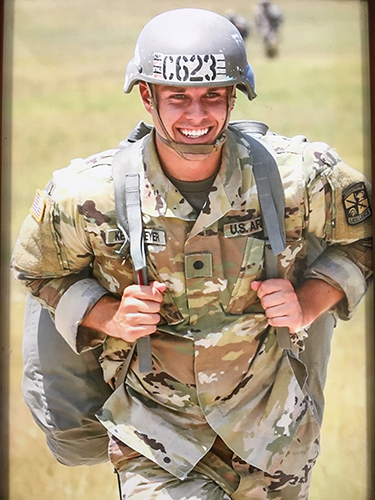 Southern Illinois University Edwardsville Army ROTC Cadet Kevin Kerkemeyer has been awarded the esteemed Legion of Valor Bronze Cross for Achievement, a highly competitive national award that honors exceptional achievement in areas of scholarship, physical fitness, leadership and citizenship/volunteerism.
Southern Illinois University Edwardsville Army ROTC Cadet Kevin Kerkemeyer has been awarded the esteemed Legion of Valor Bronze Cross for Achievement, a highly competitive national award that honors exceptional achievement in areas of scholarship, physical fitness, leadership and citizenship/volunteerism.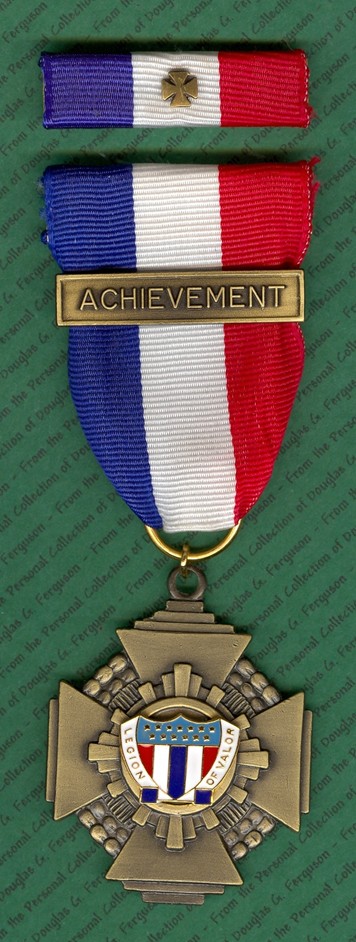 “I was surprised to receive this award considering the excellent quality of my fellow cadets in the SIUE Army ROTC program,” Kerkemeyer said. “Our program is a group ‘crowded with excellence.’ I am thrilled to represent our ROTC program and SIUE on a national level.”
“I was surprised to receive this award considering the excellent quality of my fellow cadets in the SIUE Army ROTC program,” Kerkemeyer said. “Our program is a group ‘crowded with excellence.’ I am thrilled to represent our ROTC program and SIUE on a national level.”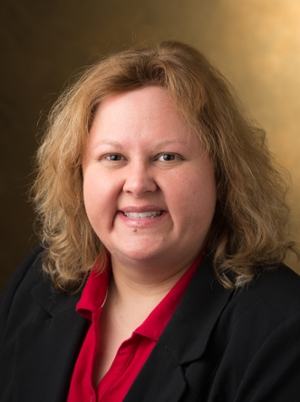 The Southern Illinois University Edwardsville Graduate School has added a fully online option for a Master’s of Public Administration (MPA) degree starting fall 2021. This existing program will continue to offer a hybrid option along with the new fully online option.
The Southern Illinois University Edwardsville Graduate School has added a fully online option for a Master’s of Public Administration (MPA) degree starting fall 2021. This existing program will continue to offer a hybrid option along with the new fully online option.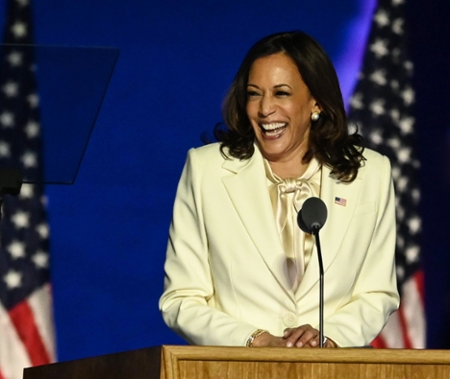 Exhilarated, buoyant, empowered, valued, regarded and visible are some adjectives that rushed to mind when several Southern Illinois University Edwardsville Black, Indigenous and People of Color (BIPOC) women reflected on the historic news of Vice President-elect Kamala Harris being the first Black and Indian-American woman in line to hold the second highest office in the land.
Exhilarated, buoyant, empowered, valued, regarded and visible are some adjectives that rushed to mind when several Southern Illinois University Edwardsville Black, Indigenous and People of Color (BIPOC) women reflected on the historic news of Vice President-elect Kamala Harris being the first Black and Indian-American woman in line to hold the second highest office in the land. 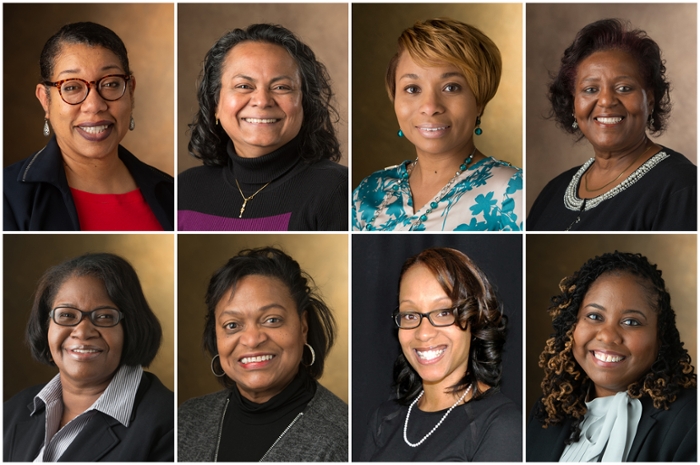 Department of Pharmacy Practice and the SOP Director of Diversity, Equity and Inclusion. Butler is also a member of the same Black sorority that Harris belongs to – Alpha Kappa Alpha (AKA) Sorority, Inc. “She represents a variety of social identities that have been marginalized for centuries. To see someone who looks like me in the second highest office in this country not only motivates and gives me hope, but it also makes me extremely hopeful for my daughter, my students and all the females who thought this was not attainable. Kamala Harris has shattered a ceiling that has existed for more than 600 years.”
Department of Pharmacy Practice and the SOP Director of Diversity, Equity and Inclusion. Butler is also a member of the same Black sorority that Harris belongs to – Alpha Kappa Alpha (AKA) Sorority, Inc. “She represents a variety of social identities that have been marginalized for centuries. To see someone who looks like me in the second highest office in this country not only motivates and gives me hope, but it also makes me extremely hopeful for my daughter, my students and all the females who thought this was not attainable. Kamala Harris has shattered a ceiling that has existed for more than 600 years.” 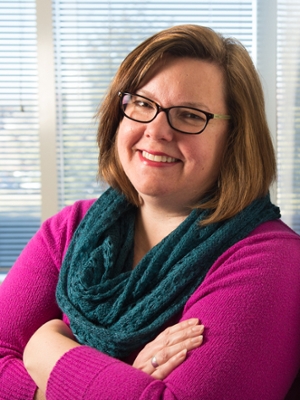 Rolland, Inc., recently featured SIUE Creative Director Heather Kniffel of University Marketing and Communications in its “
Rolland, Inc., recently featured SIUE Creative Director Heather Kniffel of University Marketing and Communications in its “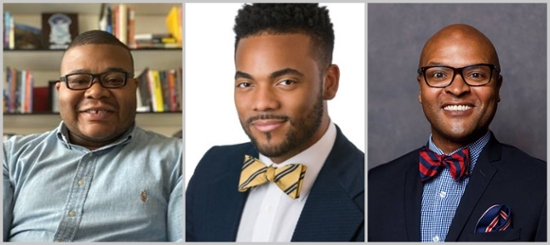 The DREAM (Dismantling Racism through Education, Advocacy and Mobilization) Collective at Southern Illinois University Edwardsville will air its next episode of the podcast, “Blacktivism in the Academy,” on Thursday, Nov. 12.
The DREAM (Dismantling Racism through Education, Advocacy and Mobilization) Collective at Southern Illinois University Edwardsville will air its next episode of the podcast, “Blacktivism in the Academy,” on Thursday, Nov. 12. 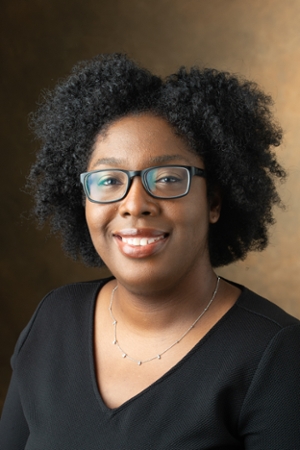 Southern Illinois University Edwardsville has selected Telisha Reinhardt as coordinator of military and veteran services. Reinhardt will focus on supporting the SIUE military-connected population with accessing education and supporting those students through graduation. SIUE Military and Veteran Services has more than 800 enrolled military-connected students.
Southern Illinois University Edwardsville has selected Telisha Reinhardt as coordinator of military and veteran services. Reinhardt will focus on supporting the SIUE military-connected population with accessing education and supporting those students through graduation. SIUE Military and Veteran Services has more than 800 enrolled military-connected students. 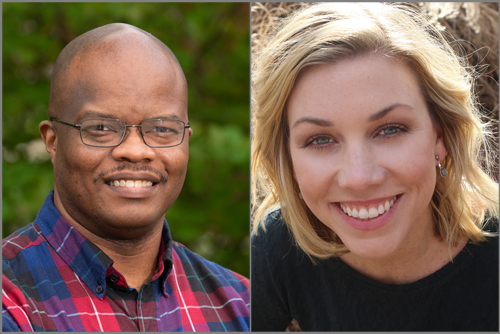 Southern Illinois University Edwardsville’s Undergraduate Research and Creative Activities (URCA) program encourages, supports and enables undergraduate students of all disciplines to participate in research and creative activities under faculty mentorship. Each semester, the URCA program recognizes outstanding faculty mentors and student researchers through four awards.
Southern Illinois University Edwardsville’s Undergraduate Research and Creative Activities (URCA) program encourages, supports and enables undergraduate students of all disciplines to participate in research and creative activities under faculty mentorship. Each semester, the URCA program recognizes outstanding faculty mentors and student researchers through four awards.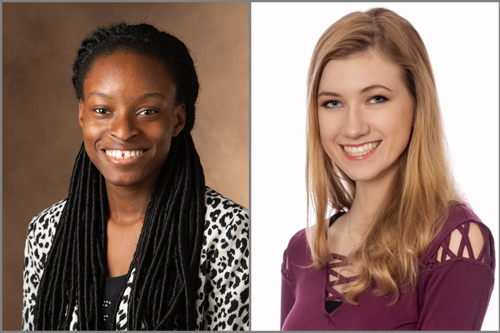 URCA student Jamie Grawitch nominated Best-Kinscherff for safely bringing live theater back to the SIUE community after a nine-month hiatus as a result of COVID-19. In October, the Department of Theater and Dance presented Garden Flow, an outdoor, promenade-style dance performance created and directed by Best-Kinscherff.
URCA student Jamie Grawitch nominated Best-Kinscherff for safely bringing live theater back to the SIUE community after a nine-month hiatus as a result of COVID-19. In October, the Department of Theater and Dance presented Garden Flow, an outdoor, promenade-style dance performance created and directed by Best-Kinscherff.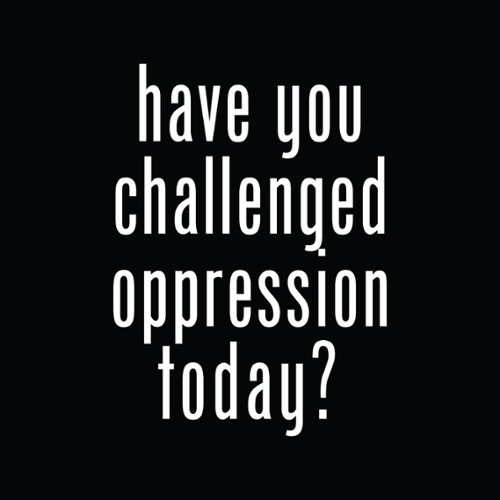 A foundation for the difficult but rewarding, volatile but freeing and defensive but uplifting work of fighting oppression through the creation of a new student group is being laid by a handful of graduate students at Southern Illinois University Edwardsville and their faculty advisor.
A foundation for the difficult but rewarding, volatile but freeing and defensive but uplifting work of fighting oppression through the creation of a new student group is being laid by a handful of graduate students at Southern Illinois University Edwardsville and their faculty advisor. 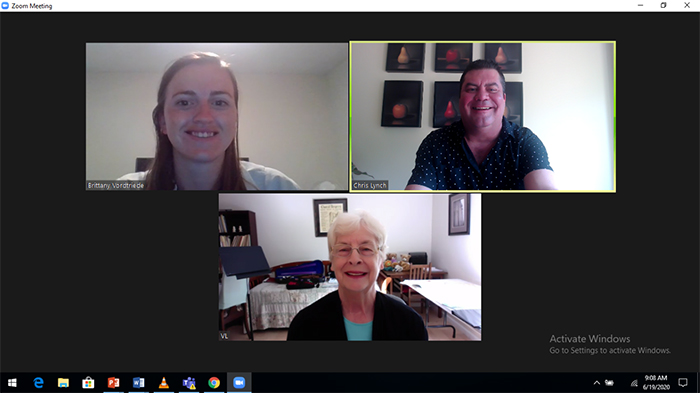
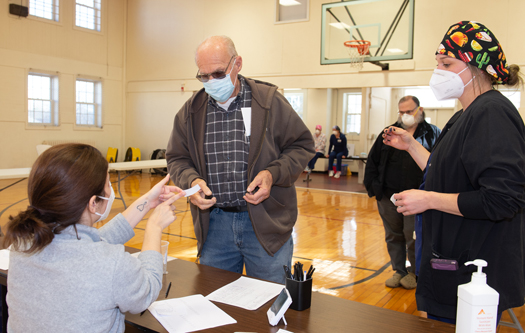 Nearly 90 veterans received free dental care during the annual Veteran’s Care Day event hosted by the Southern Illinois University School of Dental Medicine (SIU SDM). On Thursday, Nov. 12, the SIU SDM provided more than $50,000 worth of free dental treatment to veterans in need.
Nearly 90 veterans received free dental care during the annual Veteran’s Care Day event hosted by the Southern Illinois University School of Dental Medicine (SIU SDM). On Thursday, Nov. 12, the SIU SDM provided more than $50,000 worth of free dental treatment to veterans in need.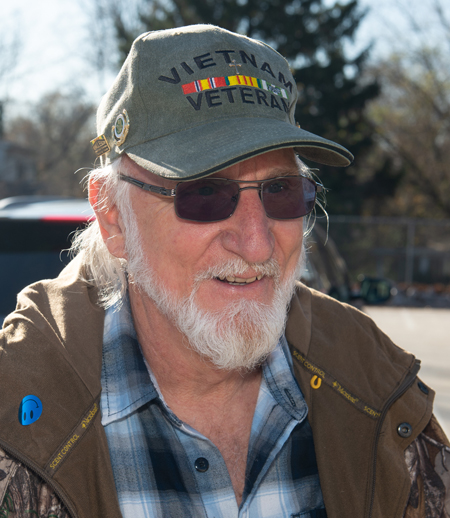 “We are glad to be able to continue serving these patients,” Kosten said. “They will now have access to a dentist for everything from routine cleanings to emergency pain, as well as more complex treatments like dentures and implants.”
“We are glad to be able to continue serving these patients,” Kosten said. “They will now have access to a dentist for everything from routine cleanings to emergency pain, as well as more complex treatments like dentures and implants.”